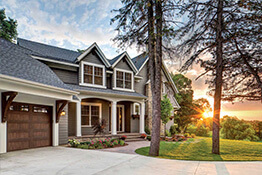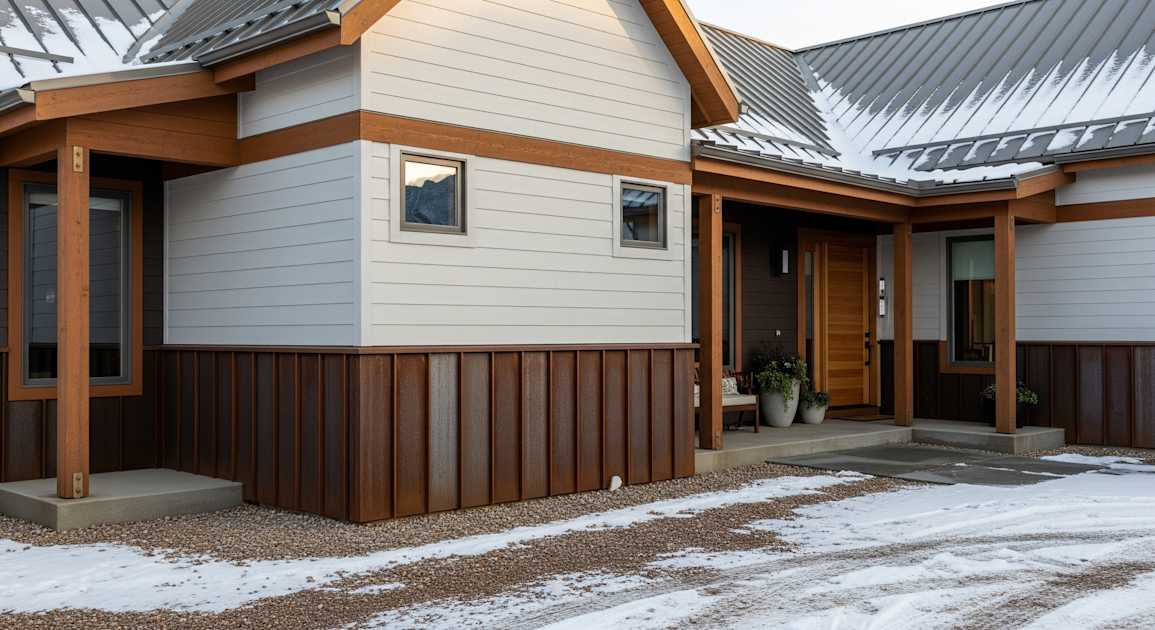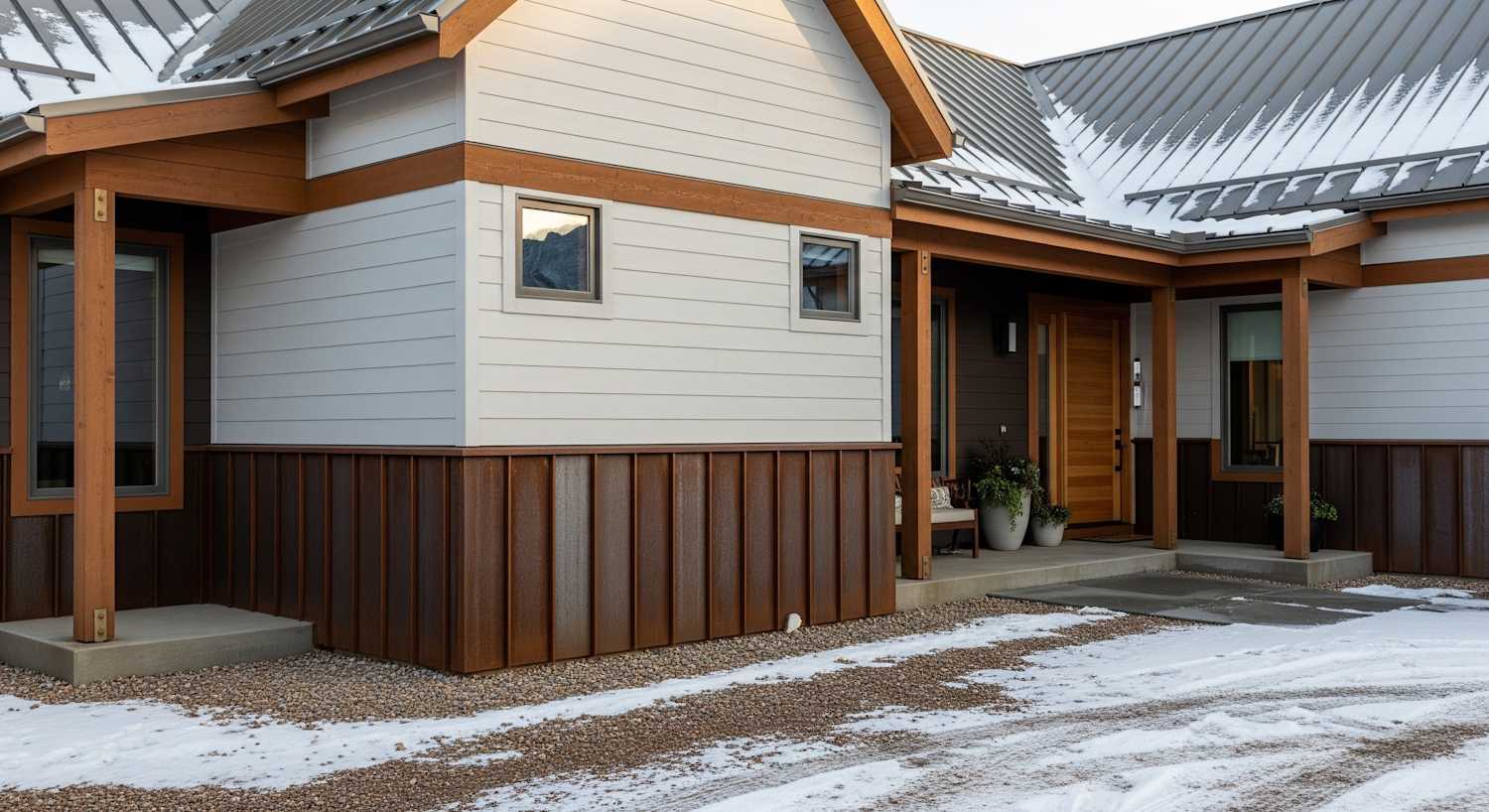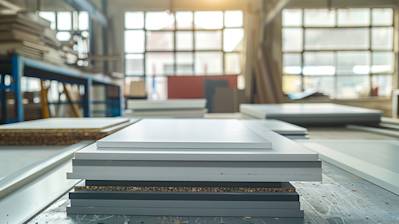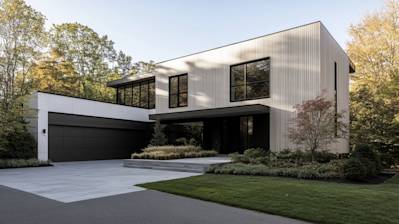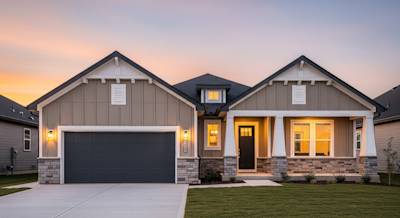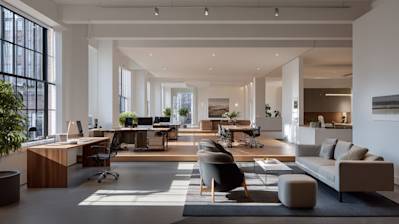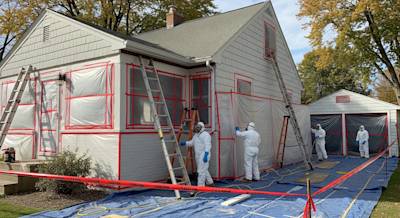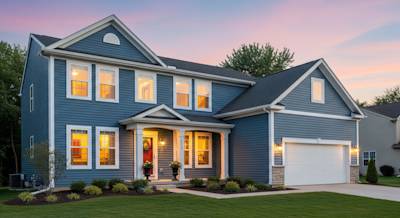Shiplap siding has recently catapulted to the spotlight, thanks to trendy design shows and social media feeding our collective appetite for unique aesthetics and space efficiency. In case you've only just started considering this design element for your home, this blog provides an informative guide on everything you need to know about shiplap siding.
What is Shiplap Siding?
Shiplap is a type of wooden board predominantly used in exterior and interior siding of residential and commercial structures. It's known for its distinctive design feature: rabbet grooves. This allows each plank to interlock with the next, creating a tight seal that prevents wind and water from seeping through.
A powerful conjunction of utility and aesthetics, shiplap siding adds a charming, rustic touch, evoking images of a serene countryside retreat. Its appeal does not stop there. Shiplap's interlocking design also naturally enhances the structural integrity of the building, a very valuable trait in siding material.
History of Shiplap Siding
To fully appreciate shiplap siding, let's take a quick journey onto the pages of history. Shiplap originates from shipbuilding, from which its name derives. Used to construct the hulls of the ships due to their tight seal, shiplap boards eventually transitioned to the building industry where they found a permanent place in the design and construction realms.
These days, shiplap siding is praised for its unique rustic appeal and pawned over by homeowners and designers looking to introduce a whiff of vintage charm into modern homes.
Types of Shiplap Siding Material
Speaking about shiplap materials, there are several options you can consider:
Solid Wood: The most traditional material used for shiplap siding, solid wood like cedar, pine, or spruce, provides a warm, rustic look and feels that manmade materials can't quite replicate. Solid wood shiplap can either be painted or stained to match your preferred aesthetic while also providing excellent insulation.
Engineered Wood: Engineered wood is made from bonded wood strands and adhesive. Easy to install and budget-friendly, engineered wood offers a sound alternative for those who prefer the look of wood without the maintenance responsibilities that come with it.
MDF or Plywood: Medium-Density Fibreboard (MDF) or plywood are cost-effective options that deliver the timeless appeal of real wood. Treated to resist moisture, these materials are suitable for indoor applications.
How to Install Shiplap Siding
When installing shiplap siding, some basic steps need to be followed:
Measurement: First, measure the area you wish to clad with shiplap. Understand the space requirement and the amount of material you would need.
Purchase Material: Order the shiplap boards based on your measurements.
Preparation: Prepare the walls by removing old coverings, fixtures and outlet plates.
Installation: Starting from the bottom, nail the shiplap boards horizontally onto the wall.
Finishing: Once installation is done, apply your finish of choice.
While these are basic steps, depending on the area you're installing onto, the complexity might vary. For instance, fitting shiplap to ceilings or corners would necessitate additional steps. In such cases, it is recommended to seek professional assistance.
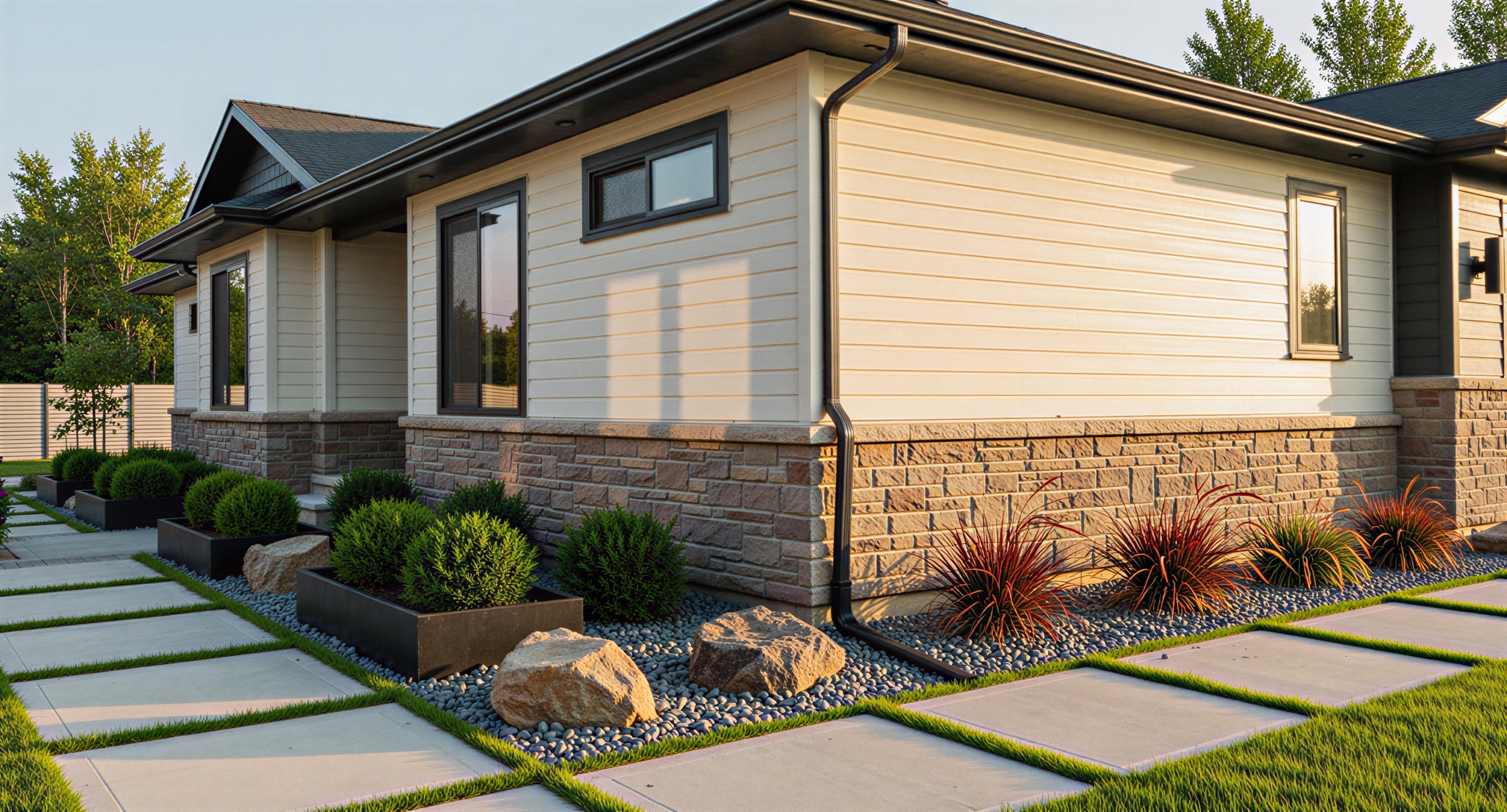
Frequently Asked Questions about Shiplap Siding
Can Shiplap Siding Be Used Outdoors?
Yes, shiplap siding can be used outdoors. It's actually a perfect option for exterior cladding because of its durability and ability to withstand harsh weather conditions. However, it's crucial to ensure the wood used for your shiplap siding is properly treated and sealed, and all installation steps are adequately followed to ensure the longevity of your siding.
What's the Cost of Shiplap Siding?
The cost of shiplap siding can vary greatly depending on several factors. This includes the type of wood used, the size and complexity of the project, and whether you're installing it yourself or hiring a professional. On average, however, expect to pay between $2.50 and $7.00 per square foot for shiplap materials.
What Maintenance Is Required for Shiplap Siding?
Maintaining your shiplap siding requires regular cleaning, checking for damage, and resealing it every few years. Regular cleaning can help prevent buildup of dirt and grime, while regular inspections will help identify spots that have been damaged or lost their finish. Regular maintenance will help extend the life of your shiplap siding.
Are There Different Styles of Shiplap Siding?
Yes, shiplap siding comes in a variety of styles. The traditional style features equal-width wooden planks installed horizontally, while rustic style shiplap siding features aged and reclaimed woods for a more rugged look. Contemporary shiplap, meanwhile, might include narrower planks or unconventional patterns.
Can I Paint or Stain Shiplap Siding?
Absolutely! One of the many benefits of shiplap siding is that it can be painted or stained in any color or shade. This gives you control over the look and feel of your space. Whether you want light-colored walls to enhance the natural brightness of a room, or you want a bold, dark wall as an accent, your options are limitless.
How Does Shiplap Siding Compare to Other Types of Siding?
Shiplap siding is particularly known for its appeal and ability to add character to a space. Its overlapping design makes it durable and resistant to harsh weather conditions, which isn't a feature in all siding options. However, it's crucial to research and compare different siding choices to understand what will work best for your needs and preferences.

Pros of Shiplap Siding
Aesthetically Pleasing
One of the most significant advantages of shiplap siding is its aesthetic appeal. This type of siding has a distinctive and rustic look that can add character, depth and charm to any exterior or interior design. The parallel lines and unique overlap of shiplap boards can bring a sense of cottage-like coziness and warmth to any space.
Versatility
Shiplap siding is highly versatile and can be used both inside and outside of the home. Whether you're looking to spruce up your space with a rustic farmhouse look, a beachy Cape Cod style, or a contemporary minimalist design, shiplap can deliver. Shiplap can be painted or stained to match the décor, or it can be left natural to highlight its wood grain and natural texture.
Easy to Install
One of the great things about shiplap siding is that it is relatively easy to install. The shiplap edges allow for simple placement and securement, reducing the complexity of the installation process. This makes shiplap a good option for DIY projects. However, proper tools and protective gear, as well as some understanding of construction, are still required.
Insulation and Soundproofing
Shiplap siding has excellent thermal insulation qualities. It helps to keep your home warm during winters and cool during summers. This can lead to energy savings and a more comfortable living environment. Additionally, it has soundproofing properties making it a good option for spaces where noise reduction is desired.
Durability
As an exterior siding option, shiplap withstands the elements remarkably. It's sturdy and durable; able to withstand high winds and harsh weather conditions. The boards lock together to create a tight seal, protecting the interior of the building from moisture, drafts, and insects.
Cons of Shiplap Siding
Cost
One of the main downsides to shiplap siding is the cost. In comparison to other types of siding, shiplap can be more expensive. This is due to both the material cost and the labour involved. While shiplap is easier to install than some other types of siding, it still requires more work than vinyl or metal siding, which can drive up the overall cost.
Maintenance
While shiplap is durable, it still requires regular maintenance to weatherproof and protect it from elements such as insects and rot. This might include regular painting or staining, inspections for damage, and possibly treatment for pests. These considerations can add extra time and cost to the upkeep of your shiplap siding.
Susceptibility to Moisture Damage
Although the overlapping design of shiplap helps to keep out wind and weather, it isn't entirely immune to moisture damage. If moisture does manage to get behind the shiplap, it can lead to problems such as mold and rot. It is therefore not ideally suited for regions with high humidity or heavy rainfall unless it's well maintained and regularly checked for damage.
Shrinkage and Swelling
Another potential downside of shiplap siding is that it can experience shrinkage and swelling depending on seasonal temperature and moisture changes. This could potentially cause gaps to form between the boards over time, compromising the overall appearance and integrity of the siding.
Not Suitable for Every Architectural Style
Finally, while shiplap is quite versatile, it may not be suited for every architectural style. Shiplap provides a specific cottage-like, rustic aesthetic that may not complement more modern or contemporary homes.
Myths / Misconceptions about Shiplap Siding
Much of the confusion and misinformation about shiplap siding originates from its surge in popularity due to home improvement TV shows and interior design trends. This increased interest has also resulted in a variety of myths and misconceptions about what exactly shiplap is and how it should be used. Let's debunk some of them.
Myth 1: Shiplap is the Same as Tongue-and-Groove Siding
One common misconception is that shiplap siding is the same as tongue-and-groove siding. However, they are different types of siding with unique characteristics.
Differences in Construction
Shiplap siding consists of wooden boards that overlap one another, creating a distinctive joint that's visible from the front. This simply channel, or rabbet, allows each board to slightly overlap its neighbor providing a tight seal against weather. On the other hand, tongue-and-groove siding has a 'tongue' on one edge and a 'groove' on the other, the boards fit into each other snugly, creating a seamless look.
Differences in Appearance
Once installed, shiplap and tongue-and-groove siding can also have distinct appearances. With shiplap siding, you often see a thin, visible line between each board. This is due to the overlapping nature of the boards. Whereas with tongue-and-groove, you'll see a less pronounced joint in between boards.
Myth 2: All Horizontal Siding is Shiplap
There's a longstanding myth that all horizontal siding is shiplap. This misconception likely comes from the fact that shiplap siding is often installed horizontally, but not all horizontal siding is shiplap.
Different Types of Horizontal Siding
There are several types of horizontal siding that are not shiplap. Lap siding, board-and-batten, and clapboard siding are all installed horizontally but do not have the overlapping design characteristic of shiplap. Each has its own distinctive style and installation requirements.
Myth 3: Shiplap Siding is Only for Interiors
While shiplap has indeed become a popular choice for interior applications like accent walls or ceilings, believing it's only for interiors is a myth. Shiplap was originally used as exterior siding on barns, sheds, and older homes due to its ability to keep out the elements.
Shiplap as Exterior Siding
When installed correctly with the right materials, including a barrier to protect against moisture, shiplap siding can be a great option for the exterior of a home. It has a rustic aesthetic and its overlapping design makes it excellent for weather resistance.
Myth 4: Shiplap is Always Painted White
The popularity of shiplap in farmhouse-style homes has resulted in the belief that shiplap is always painted white. While white shiplap does convey a clean, bright aesthetic, shiplap can be painted or stained any color to match the design and style of a home.
Choosing a Color for Shiplap
You can use shiplap to create a variety of looks. Staining shiplap can highlight the natural wood grain, or using bold paint colors can create a striking design element. Shiplap can be as versatile as your imagination allows.
Myth 5: Shiplap Can't be Used in Moist Environments
Finally, a common belief is that shiplap cannot be used in moist environments like bathrooms or kitchens. While wood does absorb moisture and can warp, this can be mitigated with the right wood species and finishes.
Shiplap in Moist Environments
If you want to use shiplap in a bathroom or kitchen, it's best to select a wood species that naturally resists moisture like cedar or redwood. In addition, using quality finish materials can help seal the wood and protect it from moisture damage.
In conclusion, shiplap siding is a versatile, beautiful material that can offer a unique look to both interior and exterior applications. But it's important to understand the truth about shiplap siding to make the most informed choice for your home. Remember, not all siding is shiplap, and shiplap is not only for interiors and painted white. Shiplap can accommodate a variety of colors and styles, and can be a great option for wet environments when the right wood species and finishes are used.
Summary
So, as we've seen, shiplap siding is a popular choice for both interior and exterior use. It's recognized for its durability, appeal, and ease of installation, making it a favorite amongst homeowners looking to create a rustic, cozy atmosphere. Able to withstand harsh weather conditions, shiplap siding is a reliable choice that can significantly enhance a home's curb appeal.
Another noteworthy point about shiplap siding is its unique design. The overlapping configuration is not just aesthetically pleasing but also provides an efficient barrier against wind and rain. With its interlocking system, shiplap siding guarantees a tight seal, keeping homes warm during winter and cool during the summer.
Lastly, the versatility of shiplap siding is to be appreciated. It can be implemented in a range of styles, painted, or stained, fitting comfortably into your home style, whether classic or modern. So, if you're looking to add more character to your space, considering the timeless appeal and practical features, shiplap siding might be your best bet.
About US Quality Construction of Lexington
US Quality Construction of Lexington, located in the beautiful city of Lexington, KY, is a highly reputed and trusted company offering the best construction and remodelling services. Our team of dedicated and skilled experts bring innovative solutions, experience, and exceptional craftsmanship to each project. Whether it's a minor remodel, a major renovation, or new construction, we're your one-stop solution for all your construction needs. We cater to our clients' requirements with dedication and ensure that we carry their vision from the blueprint to the final structure. With a strong commitment to superior quality and customer satisfaction, we establish lasting relationships with our clients. Our company is not just building structures; we're also building a legacy of excellence.
Tags: wood siding, farmhouse style, interior design,
